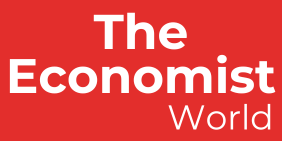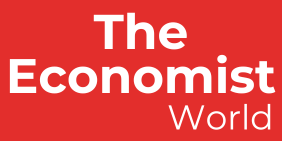The Economic Growth Capital Resource (EGCR), introduced by the World Subnationals and Nations (WSANDN), stands as a unique economic tool that promises to reshape the global financial system. Unlike traditional currencies, cryptocurrencies, or speculative assets, the Advantages of EGCR are enormous. It is a global resource that integrates blockchain and AI technology to foster economic stability, growth, and long-term prosperity.
To better understand its significance, it is crucial to compare its advantages against traditional financial frameworks, including existing national currencies, cryptocurrencies, and global economic policies.
1. Stability vs. Volatility: EGCR vs. Traditional Currencies and Cryptocurrencies
One of the standout advantages of EGCR is its inherent stability compared to both traditional national currencies and cryptocurrencies.
- Traditional Currencies: National currencies, such as the US Dollar or Euro, are subject to volatility driven by inflation, interest rates, and political instability. These fluctuations can disrupt both local and global markets. EGCR, however, offers a solution by providing a hedge for local and global currencies, stabilizing them against external shocks, inflation, and currency devaluation. Unlike national currencies, EGCR is not directly influenced by any single nation’s fiscal policy, making it a more reliable store of value during times of economic uncertainty.
- Cryptocurrencies: Cryptocurrencies like Bitcoin and Ethereum have grown in popularity, but they are still highly volatile and speculative, subject to massive price swings. In contrast, EGCR operates as a safe asset like gold, rather than a speculative digital token. Part of the Advantages of EGCR is that it provides a reliable store of value and is designed to complement existing currencies, not compete with them. It’s blockchain-powered framework ensures transparent, secure transactions without the erratic fluctuations seen in cryptocurrency markets.
2. Global Economic Integration vs. National Barriers: EGCR’s Role in Global Development
EGCR is engineered to bridge the gap between local economies and global markets, promoting international cooperation while empowering national and subnational economies. This stands in stark contrast to traditional financial systems and approaches to global economic integration.
- National Economies and Protectionism: In a world where protectionist policies and tariff wars have become more common, EGCR offers a unifying framework that mitigates the economic risks of isolationism. EGCR can facilitate cross-border investments, allowing countries to engage in projects such as infrastructure development, energy, and healthcare without the need to navigate complex trade barriers. This collaborative approach benefits all nations, especially smaller or developing ones, which often face challenges in accessing capital for critical projects.
- Global Debt Crisis: The global debt currently exceeds $315 trillion, posing an existential threat to national and global economic stability. EGCR introduces a sustainable debt management system that helps nations restructure their debts and invest in economic growth, rather than continuing to rely on foreign loans with high interest rates. The debt relief mechanism powered by EGCR enables nations to reduce their debt burdens and redirect resources into economic development, strengthening their economies and enabling long-term growth.
3. Decentralization and Financial Autonomy vs. Centralized Systems
One of the Advantages of EGCR lies in its decentralized, inclusive approach, offering financial empowerment to local economies. This contrasts sharply with traditional centralized financial systems.
- Centralized Financial Institutions: National banks and financial institutions are often centralized and can be influenced by political agendas or economic policies that do not serve the broader interests of local populations. EGCR, however, operates through a decentralized framework, ensuring that financial resources are allocated efficiently to sectors such as agriculture, education, healthcare, and technology. The transparency of the blockchain ensures that funds are used for their intended purposes, reducing the risk of corruption or misallocation.
- Autonomy for Subnational Economies: Through the use of mechanisms such as Subnational Financial Institutions (SnFIs), Subnational Reserve Systems (SNRS), and Sector Development Funds (SDFs), EGCR empowers local governments, communities, and businesses to manage and grow their economies independently. These tools provide local economies with the financial autonomy they need to invest in infrastructure, job creation, and regional development, without relying on federal or international financial institutions. This approach creates more resilient economies capable of withstanding external shocks.
4. Job Creation and Poverty Eradication: EGCR’s Role in Global Employment
Another significant advantage of EGCR is its ability to create jobs and stimulate economic development, particularly in regions suffering from poverty or unemployment.
- Traditional Economic Models: Many countries struggle with high unemployment, especially in developing nations. Traditional economic frameworks often fail to provide sufficient job opportunities or economic diversification. EGCR’s targeted approach ensures that at least 1 billion jobs will be created globally within five years by investing in sectors such as agriculture, healthcare, technology, and infrastructure. This job creation will also mitigate fears surrounding technological unemployment caused by AI and automation, providing humans with sustainable roles in the global economy.
- Poverty Eradication: In line with its mission to eradicate poverty by 2030, EGCR is designed to uplift underdeveloped regions by providing them with the financial tools to foster local economic growth. Its structured investments into key sectors help to address the root causes of poverty and promote economic inclusion. This is a far more effective solution than traditional aid-based approaches, as EGCR empowers local communities to become self-sustaining.
5. Global Peace and Economic Security vs. Conflict and Instability
Perhaps one of the most unique advantages of EGCR is its potential to contribute to global peace and stability. The EGCR initiative is explicitly designed to reduce global conflict by addressing economic disparities and fostering cooperation.
- Traditional Economic Systems and Conflict: Economic disparity, lack of access to resources, and political instability often lead to conflicts and wars. EGCR directly counters this by promoting economic cooperation and mutual growth. As it empowers nations and local economies, it reduces reliance on foreign debt and mitigates the risk of financial crises that can destabilize regions. This approach, in turn, contributes to a more peaceful world.
- Global Peace Agreement (GPA): EGCR is supported by the Global Peace Agreement (GPA), a comprehensive initiative aimed at preventing future conflicts by addressing the underlying economic causes of war. It plays a critical role in achieving long-term global peace through fostering sustainable growth and equitable development.
Conclusion
EGCR offers a comprehensive and innovative solution to the global economic challenges of the 21st century. It stands in stark contrast to traditional financial frameworks, cryptocurrencies, and national economic policies. By stabilizing local and global currencies, fostering international cooperation, creating jobs, and promoting global peace, EGCR provides a more equitable, resilient, and sustainable economic future.
Unlike volatile cryptocurrencies, EGCR offers a safe and stable store of value, while its decentralized structure ensures that wealth is distributed equitably across both national and local economies. Its ability to support job creation, poverty eradication, and global peace further underscores its transformative potential. In a world where traditional systems often fail to address the needs of all nations, EGCR represents a revolutionary step forward, offering a viable framework for sustainable global development.


